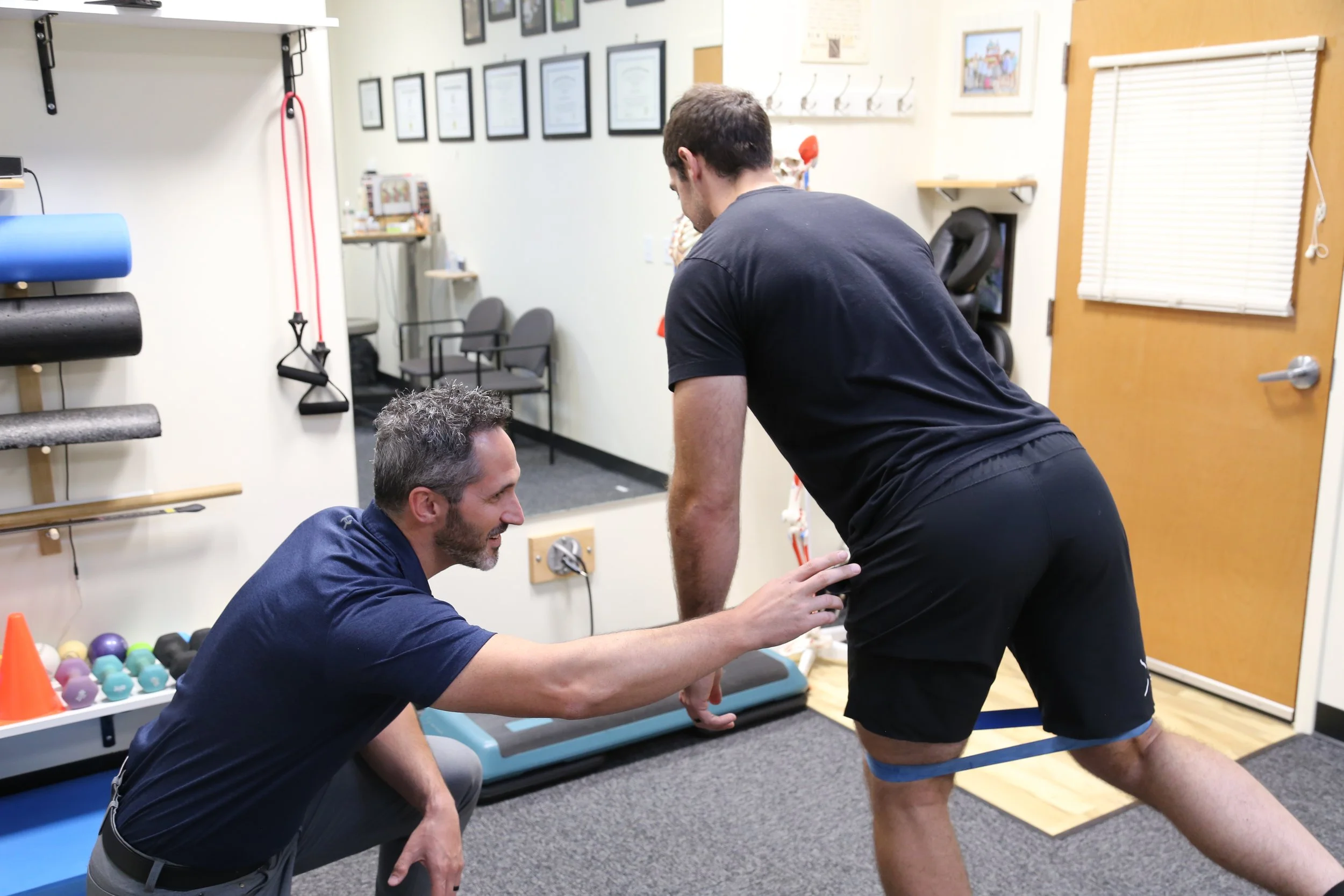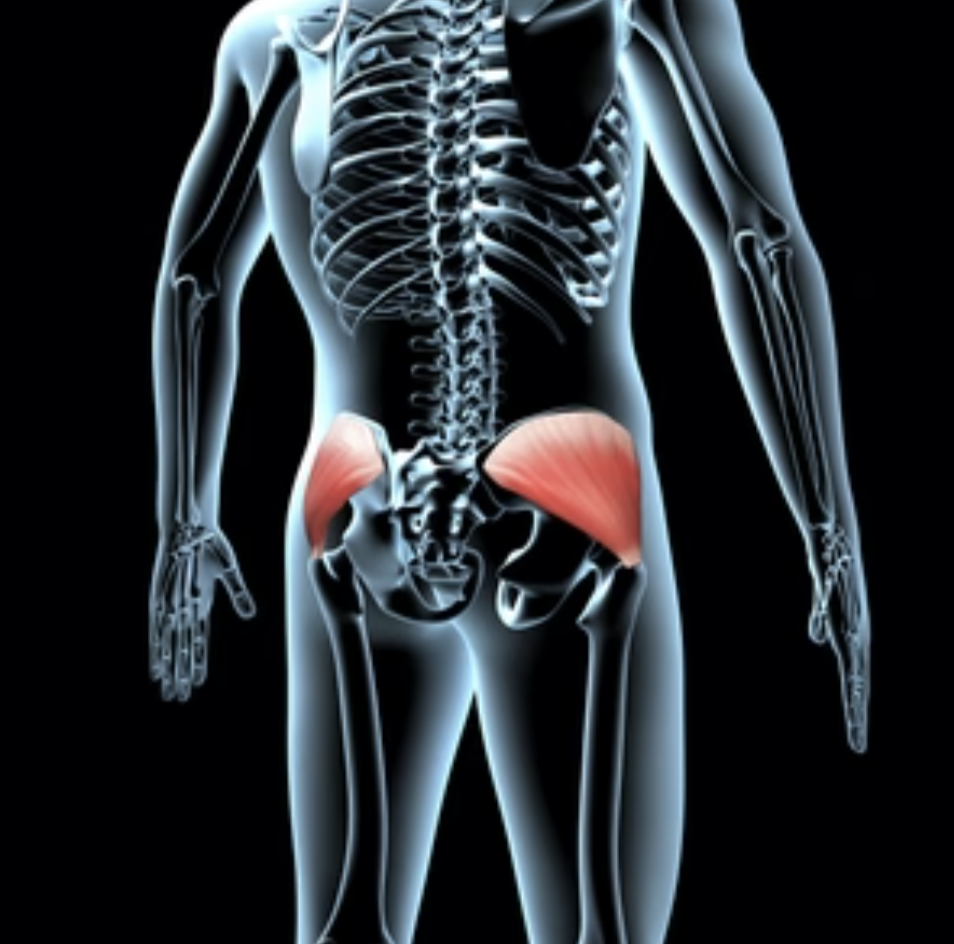The leaves are changing fast! This beautiful season draws endurance runners outside, perhaps extending their mileage to soak in the scenery or train for upcoming events. However, with increased activity comes the potential for overuse issues, like a nagging pain on the outer side of the hip that could signal glute medius tendinopathy (an irritation or degeneration of the tendon connecting the gluteus medius muscle to the hip bone). Fortunately, understanding this common condition and seeking skilled physical therapy, including innovative techniques like dry needling paired with specific and focused training, can turn things around, helping you stay active and prepare for winter sports like skiing or snowshoeing, where strong, stable hips are key to avoiding setbacks.
This image depicts the location of the gluteus medius
What Is Glute Medius Tendinopathy?
Glute medius tendinopathy, often part of a broader category called gluteal tendinopathy, involves inflammation or degenerative changes in the tendon of the gluteus medius muscle (one of the key muscles on the side of your hip that helps stabilize the pelvis during movement). This tendon attaches to the greater trochanter (the bony knob you can feel on the outside of your upper thigh), and when overloaded, it can lead to moderate to severe pain. Research shows it's the most common lower limb tendinopathy, affecting up to 23.5% of middle-aged women, but it's also prevalent among athletes like runners due to repetitive stress. Unlike a sudden injury, it often develops gradually, making it easy to dismiss at first—but addressing it early can prevent it from sidelining you. academic.oup.com
Image credit: Jenny Hill via Unsplash
Why Does It Affect Endurance Runners?
Endurance running, with its high volume of repetitive strides, places unique demands on the hips. The gluteus medius works tirelessly to keep your pelvis level and prevent your knees from caving inward (a movement called hip adduction). In runners, factors like rapid increases in mileage—common in autumn as people ramp up for holiday races—or running on uneven surfaces such as cambered roads can compress and overload the tendon.
Studies indicate that poor movement control, such as excessive pelvic drop during single-leg stance (when one foot is off the ground), contributes significantly, leading to tendon irritation over time. Other contributors include muscle imbalances, like weakness in the glutes paired with tightness in the iliotibial band (a thick band of tissue running down the outside of the thigh), or even biomechanical issues from leg length differences. The good news? Recognizing these patterns through targeted assessment can pave the way for effective recovery, keeping your runs enjoyable rather than painful.
How The Experts at Precision Can Help:
We play a crucial role in pinpointing glute medius tendinopathy, starting with a thorough evaluation that goes beyond just listening to your symptoms. We use a battery of evidence-based tools supported by clinical research to help differentiate tendinopathy from similar conditions, ensuring your treatment plan is spot-on and tailored to your running lifestyle. We perform a gait analysis and provide tips and strategies to optimize your pattern.
Learning to appropriately load and progress strengthening for your hip is vital to managing the changing needs of your hip and tendons as you move through recovery. Tailored exercise interventions are an instrumental part of the treatment program.
Runners will see significant improvements after the first visit and will return to pain-free running within several weeks.
Dr. Mike helping a Precision client build gluteus medius motor control
The Benefits of Dry Needling in Treatment
In addition to exercise-based therapy, dry needling can be a game-changer for many runners with glute medius tendinopathy and can enhance and shorten the recovery timeline. Dr. Greg & Dr. Mike both have advanced post-graduate training in Western trigger point dry needling. They can perform dry-needling on the trigger points within the muscle as well as the tendon itself to relieve pain and improve function. Research suggests dry needling can reduce pain by stimulating local blood flow, releasing muscle tension, and modulating pain signals in the nervous system.
For runners, it can target the gluteus medius or nearby muscles like the tensor fasciae latae, which often contribute to tendon overload. Patients often report immediate relief, with studies showing reduced pain and improved hip strength after just a few sessions when combined with exercise therapy due to a reduction in reflexive inhibition (feeling of weakness resulting from protective responses from your nervous system).
Gearing Up for Winter Sports: Why Strong Hips Matter Now
As autumn fades, thoughts turn to winter adventures—think carving down slopes or trekking through snow. These activities demand even more from your hips for balance and quick directional changes. By addressing glute medius tendinopathy now, including techniques like dry needling, you're not just resolving current pain; you're building a robust foundation to avoid injuries like strains or falls during ski season. A thorough assessment and personalized plan can identify weaknesses early, ensuring you don't miss precious time on the mountain. Studies affirm that stronger hip abductors reduce injury risk in dynamic sports, so view this as an investment in year-round vitality. sciencedirect.com
Image credit: Maartin Duineveld via Unsplash
In summary, while autumn's allure might tempt you to push your runs, listening to your body and partnering with Precision Osteopractic for expert care can transform glute medius tendinopathy from a roadblock into a stepping stone. With science-backed strategies, including targeted exercises and adjuncts like dry needling, you'll emerge stronger, ready to embrace every season's activities with confidence and joy. If this is hitting on anything familiar, schedule your evaluation today to get started! Your active life is worth it!






